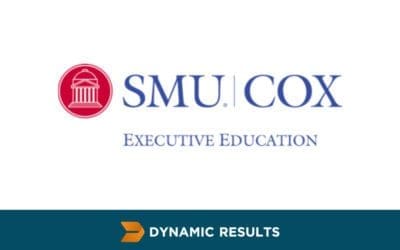Leadership Excellence: Crafting Your Communication Plan Learn how to masterfully address issues within your team or organization with advice from the best-selling book, "Winning with Accountability, the Secret Language of High Performing Organizations". Understand the...
Insights for Better Leadership
Leadership Skills: The Power of Emotional Intelligence
Ensuring Emotional Safety: A Leader's Guide in Challenging Times This video is a pivotal resource for leaders aiming to create a workplace where emotional safety is prioritized. Particularly relevant in times of organizational change and widespread societal...
Effective Communication in the Workplace: Reversing the Polarity
Mastering Workplace Communication: A New Approach We believe that you drive results through accountability by investing in the right people, at the right times. Identifying Key Relationships in the Workplace Who are the 5 to 7 most important people in your work life?...
Strategic Leadership Development for Business Success
In the pursuit of driving superior business outcomes, our discussions frequently revolve around enhancing accountability. Today, we're zoning in on a critical strategy: Altering your mindset when heading into meetings. Mastering Strategic Leadership Meetings are...
Building Accountability with Emotional Intelligence and Leadership
In the sphere of leadership and management, the Accountability Method we champion includes a pivotal technique known as Reflection. This method is instrumental in understanding how effectively we communicate ideas and how they're perceived by our audience. The...
Leading With Accountability
Enhancing Leadership Development Skills for Emotional Safety in the Workplace The Importance of Accountability in Leadership Dr. Colm Foster, a Senior Associate at Dynamic Results and co-author of "Step Up: Lead in Six Moments That Matter," highlights the critical...
Building a Culture of Accountability in the Workplace
Building a Culture of Accountability in the Workplace Enhancing Workplace Accountability with Henry Evans Henry Evans, Managing Partner and celebrated author of “Winning With Accountability, The Secret Language of High Performing Organizations,” is taking the...
Henry Evans Shares Corporate Experience with SMU Cox Students
For immediate release Henry Evans Shares Corporate Experience with SMU Cox Students Dallas, TX/USA – March 11, 2014Henry Evans, Co-founder and Managing Partner of Dynamic Results, LLC, presented a seminar titled Accountability Principles for Dynamic Results on Monday,...
From Confusion to Clarity: Strategies to Transform Leadership
Achieving Leadership Clarity to Drive Exceptional Results In an enlightening discussion, Colin Hunter, the mind behind "Be More Wrong – How Failure Makes You an Outstanding Leader," joins forces with Henry Evans, author of "Winning With Accountability – The Secret...
Enhancing Work Culture with Accountability: Free Resources
By Henry Evans Back by popular demand, we offer you some helpful hints about Creating High Accountability Cultures in your organization.This video has some ideas around how you can bea model of accountability in your organization.Elevating Work Culture through High...
Eliminating Work Excuses: Boosting Accountability and Trust
Transforming Workplace Culture by Eradicating Excuses In a candid exploration of workplace behavior, this video dives into the common practice of using excuses and its impact on credibility and trust within teams. With over 10,000 hours of executive coaching...
Sustainable Edge Unlocked: The Power of Accountability
Transforming Organizational Communication with Accountability In my recent discussions, I've emphasized the significance of establishing clear visual expectations and the necessity of garnering reflective feedback from team members. This approach is not just about...












